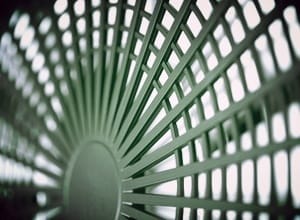Industrial Ventilation Savings from Moffitt
Industrial ventilation savings can have a huge impact on your bottom line. Paying for low-efficiency fans, or buying a HVLS that just moves hot air around, can make your energy and maintenance costs soar. Fortunately, Moffitt is here to help. See what kind of savings you can achieve with our ventilation solutions.
Choosing the Right Size Fan or Vent
Selecting the right industrial ventilation equipment is crucial. Every part of a ventilation system works together. As a result, changing having even a single element of an could throw off the balance and jack up the costs. The is why it’s important to have the right size fans and vents for your space.
With ventilation efficiency is key. The most important factor when designing a ventilation system is determining the proper air-flow requirements. This in turn helps you choose the right size industrial fan or ventilator, and saves money on excess energy use. Choosing an efficient system also means not wasting a lot of time and money on a system that doesn’t fully meet your building’s needs.
Industrial Ventilation Savings through Maintenance

Nobody wants to spend tons of money on maintenance just because they installed the wrong industrial ventilation system the first time. When you install the wrong system, the equipment has to work harder. That means more frequent breakdowns and more repairs.
From labor costs to the costs of parts, this adds up. The last thing you want is for the maintenance team to prioritize broken fans over your production line. High quality equipment can make a big difference when it comes to industrial ventilation savings.
Ventilation Sizing
Contact Moffitt to learn more about getting the right ventilation solution for your building. We’ve helped many customers save money with a new, efficient system. We can also help retrofit your current system to meet productivity, health and safety standards. Call us today to see how much you can save with a new ventilation system from Moffitt.
